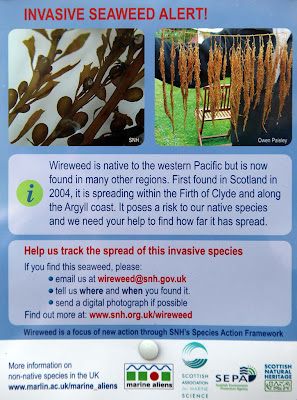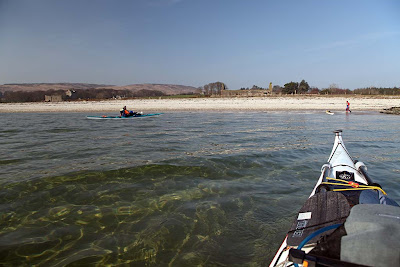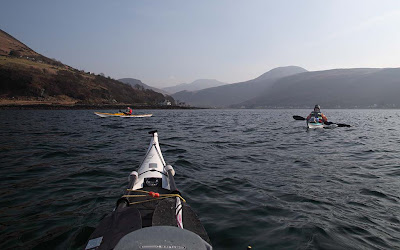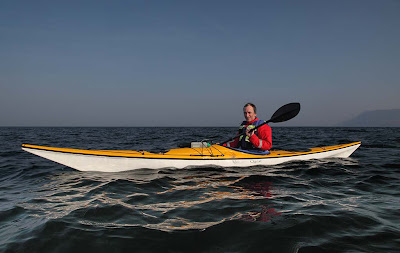
Yesterday was cold, pouring wet and windy. The coastal forecast for the Upper Clyde was Force 4 SW increasing to WNW 6 by afternoon, with gusts to 37 knots. Max air temp was 6 degrees Celsius but with windchill was only -1C.
It was just the sort of day to go sea kayaking! Phil has been paddling a double for the last 4 months but has only paddled a single kayak for 3 weeks. It seemed like a good opportunity to extend his comfort zone. We assembled a little late at Fairlie on the Clyde coast, a gust of wind on the Irvine bypass had nearly caused Phil's new Quest to part company with his roof rack. Our plan was to take luncheon in the great banqueting hall of Little Cumbrae Castle!

Soon our little band was making slow but steady progress down the Fairlie Roads, into the teeth of the wind and rain.

An ebb tide against a force 4 SW wind gave some good conditions for the paddle over to Little Cumbrae.

All was calm in the lee of the island as we made our way...

...into the little bay to the north of the castle.
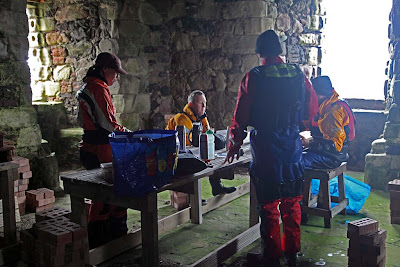
The castle provided fitting shelter to the cold, hungry staff of seakayakphoto.com.

We worked our way down the east of the island as we thought we had better take a look round Gull Point at the South end. Phil got his head down for the slog into the wind.

As we cleared the point, we met some interesting conditions. These impressed Phil so much that he managed to turn his kayak without falling in.

Looking back, even the high hills of Arran were obscured by great lumps of water, which were bearing rapidly down on us.
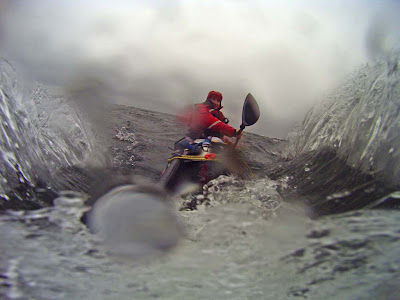
It was time for a sharp exit and we slid down the waves at high speed.

In the lee of Gull point again, Tony came over so we could check each other's GPS scores. Rats! He whopped me with his maximum speed of 16.8 Km/hr.

After a breather in the lee of Little Cumbrae we had to cross The Tan, a narrow body of water, which separates it from its greater neighbour. The west wind was whistling through the gap.

We crossed at a high ferry angle of 350 degrees. Look at the map and see how far we got blown downwind. Note the kinks in our track as the squalls hit us.
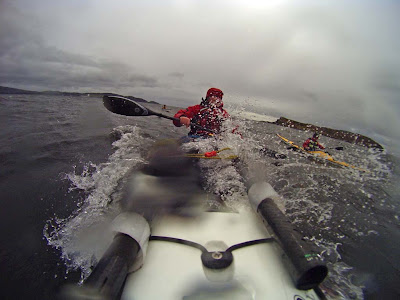
Phil made steady progress and learned how to adjust his skeg to prevent weather cocking.
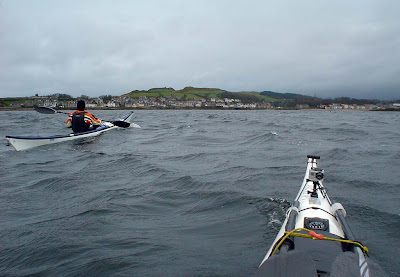
Soon we were in the shelter of Millport Bay and we stopped to replenish depleted body fat reserves on the Eileans.

At first the crossing back to Fairlie was calm as we were in the lee of Great Cumbrae.

By the time we were in mid channel the wind had swung round to the NW against the now flooding tide. Again conditions were quite interesting. Unfortunately, when nearly back at Fairlie, Phil took just a tiny little swim but he held onto his paddle and we had him back in his boat in a jiffy. It was just as well a wave did it because Tony and I were going to throw him in anyway (just for educational purposes, you understand).
What an excellent day out and didn't Phil do well?! He joins a distinguished band of seakayakphoto.com staffers who have gone for a little dip off the Cumbraes...D____d, D____d, C___k and A__n!
04/04/2009







